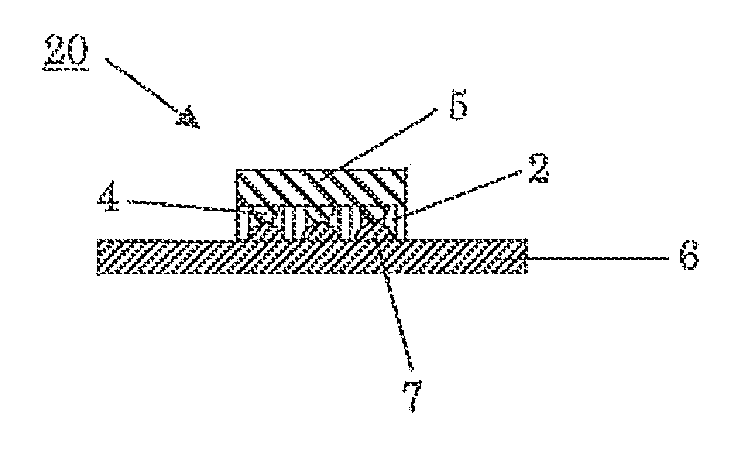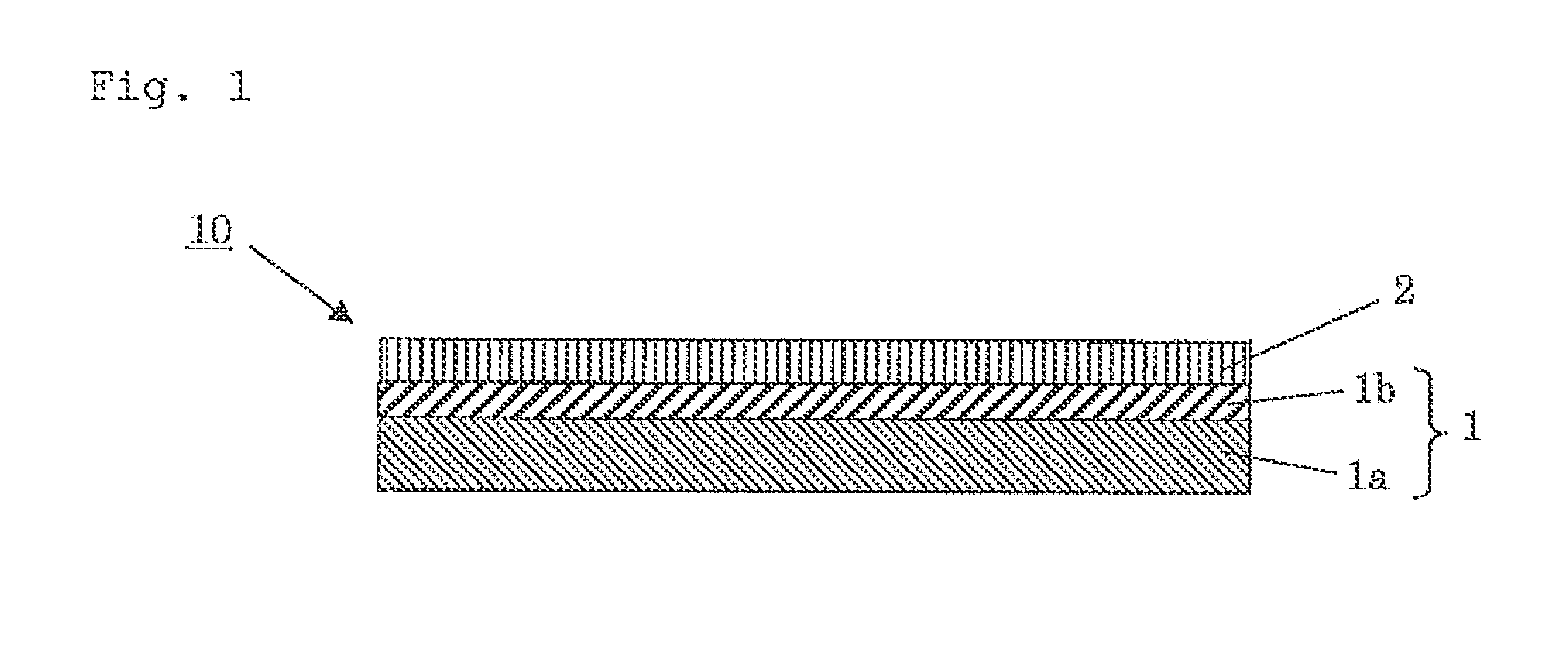Method for producing semiconductor device
a technology of semiconductor wafers and under-fill sheets, which is applied in the direction of semiconductor devices, electrical equipment, basic electric elements, etc., can solve the problems of reducing the degree of adhesion of the under-fill sheet to the semiconductor wafer, reducing the connection reliability between the semiconductor element and the adherend, and generating voids (air bubbles). , to achieve the effect of high connection reliability, efficient production and facilitation of penetration of the connection member into the under-fill material
- Summary
- Abstract
- Description
- Claims
- Application Information
AI Technical Summary
Benefits of technology
Problems solved by technology
Method used
Image
Examples
first embodiment
Providing Step
[0051]In a providing step, a sealing sheet including a support and an under-fill material laminated on the support is provided. As the support, a base material, a back surface grinding tape, a dicing tape or the like can be suitably used. This embodiment will be described taking as an example a case where a back surface grinding tape is used.
(Sealing Sheet)
[0052]As shown in FIG. 1, a sealing sheet 10 includes aback surface grinding tape 1 and an under-fill material 2 laminated on the back surface grinding tape 1. The under-fill material 2 is not necessarily laminated on the entire surface of the back surface grinding tape 1 as shown in FIG. 1, but may be provided in a size sufficient for bonding with a semiconductor wafer 3 (see FIG. 2A).
(Back Surface Grinding Tape)
[0053]The back surface grinding tape 1 includes a base material 1a and a pressure-sensitive adhesive layer 1b laminated on the base material 1a. The under-fill material 2 is laminated on the pressure-sensiti...
second embodiment
[0129]In this embodiment, a bonding step of bonding together a circuit surface 3a of a semiconductor wafer 3, on which a connection member 4 is formed, and an under-fill material 2 of the sealing sheet 10 under a reduced pressure of 1000 Pa or less (see FIG. 2A) may be employed in place of the heat pressure-bonding step in the first embodiment. Except for this modification, a predetermined semiconductor device can be produced through the same steps as in the first embodiment, but other preferred aspects will be described.
[0130]The method for bonding is not particularly limited, but a method by pressure-bonding is preferable. Pressure-bonding is carried out normally by pressing the semiconductor wafer and the sealing sheet under a load of pressure of preferably 0.1 to 1 MPa, more preferably 0.2 to 0.7 MPa, by known pressing means such as a pressure-bonding roll. At this time, pressure-bonding may be performed while heating to about 40 to 100° C.
[0131]In this embodiment, the semicondu...
third embodiment
[0135]In the first embodiment, aback surface grinding tape is used as a support, whereas in this embodiment, a dicing tape including a base material and a pressure-sensitive adhesive layer laminated on the base material is used as a support. In this case, a predetermined semiconductor device can be produced through the same steps as in the first embodiment and the second embodiment except that a semiconductor wafer having an intended thickness is used to omit the grinding step (i.e. steps in FIGS. 2B to 2E excluding the step in FIG. 2A).
PUM
 Login to View More
Login to View More Abstract
Description
Claims
Application Information
 Login to View More
Login to View More - R&D
- Intellectual Property
- Life Sciences
- Materials
- Tech Scout
- Unparalleled Data Quality
- Higher Quality Content
- 60% Fewer Hallucinations
Browse by: Latest US Patents, China's latest patents, Technical Efficacy Thesaurus, Application Domain, Technology Topic, Popular Technical Reports.
© 2025 PatSnap. All rights reserved.Legal|Privacy policy|Modern Slavery Act Transparency Statement|Sitemap|About US| Contact US: help@patsnap.com



